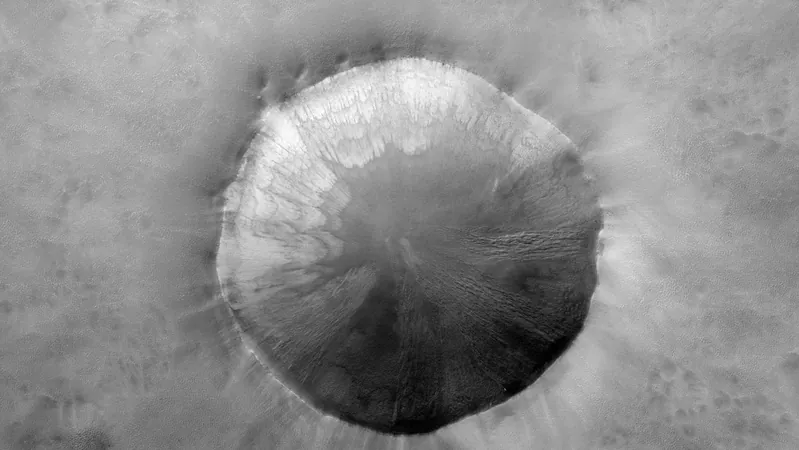
NASA's Stunning Mars Discovery: Are These Patterns Signs of Ancient Life?
2025-05-07
Author: Wai
In a groundbreaking revelation, high-resolution satellite imagery has uncovered mesmerizing paint-like patterns on the surface of Mars that strikingly resemble similar formations on Earth. This finding opens up a fascinating dialogue about the forces that have sculpted both planets.
These peculiar soil patterns, known scientifically as solifluction lobes, typically appear in cold, mountainous regions on Earth, where the soil undergoes freeze-thaw cycles throughout the seasons. The discovery suggests that Mars may have once hosted similar icy, wet conditions, potentially making these areas prime spots to explore for signs of liquid water and, perhaps, extraterrestrial life.
"Understanding how these patterns form provides crucial insights into Mars' climate history, particularly regarding the past existence of freezing and thawing cycles," commented JohnPaul Sleiman, a doctoral student from the University of Rochester, and the lead author of the study published in the journal Icarus.
Sleiman's team emphasizes that this research could illuminate environments on other celestial bodies, either fostering or hindering life's potential. "It's a crucial step in our hunt for extraterrestrial habitats," he added.
So, what exactly are solifluction lobes? On Earth, they form when layers of frozen ground partially thaw and soil begins to move downhill, creating beautiful wave-like patterns along hilly terrains. Although Mars is typically much colder and farther from the sun, similar lobes have been identified in its high-latitude regions.
Past studies suggest that Mars may have experienced freeze-thaw conditions more recently than previously believed, illuminating how these unique landforms came to existence. However, some intriguing questions remain—most notably, why do Martian lobes appear significantly larger than their Earth counterparts?
Harnessing data from NASA's Mars Reconnaissance Orbiter, the research team observed that the Martian formations align geometrically with those found in Earth's Rocky Mountains and Arctic regions. Co-author Rachel Glade, an assistant professor at the University of Rochester, pointed out that the Martian landforms evoke patterns seen in fluids, describing them as "large, slow-moving, granular examples of paint dripping down a wall."
Interestingly, the Mars lobes average about 2.6 times taller than Earth's, a distinction attributed to Mars' weaker gravity, which enables accumulated sediment to grow taller before it collapses.
The findings further support the hypothesis that these lobes are, or were, linked to ground ice, resembling fluid-like instabilities. However, the researchers caution that just from satellite imagery, confirming the involvement of liquid water remains elusive. Future laboratory experiments may be vital to understanding whether ice and liquid water are both necessary for creating these fascinating patterns.
With every discovery, Mars uncovers layers of intrigue, beckoning humanity to explore its past and the tantalizing possibility of life beyond Earth.





 Brasil (PT)
Brasil (PT)
 Canada (EN)
Canada (EN)
 Chile (ES)
Chile (ES)
 Česko (CS)
Česko (CS)
 대한민국 (KO)
대한민국 (KO)
 España (ES)
España (ES)
 France (FR)
France (FR)
 Hong Kong (EN)
Hong Kong (EN)
 Italia (IT)
Italia (IT)
 日本 (JA)
日本 (JA)
 Magyarország (HU)
Magyarország (HU)
 Norge (NO)
Norge (NO)
 Polska (PL)
Polska (PL)
 Schweiz (DE)
Schweiz (DE)
 Singapore (EN)
Singapore (EN)
 Sverige (SV)
Sverige (SV)
 Suomi (FI)
Suomi (FI)
 Türkiye (TR)
Türkiye (TR)
 الإمارات العربية المتحدة (AR)
الإمارات العربية المتحدة (AR)